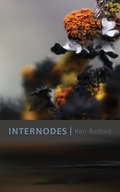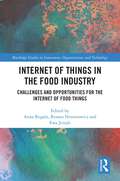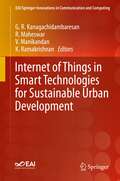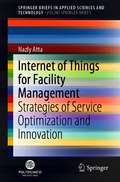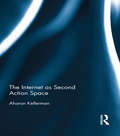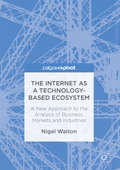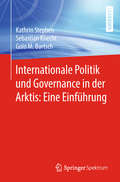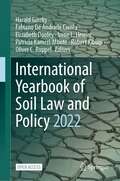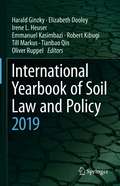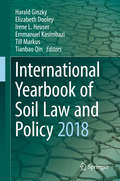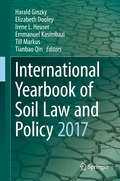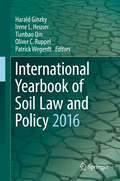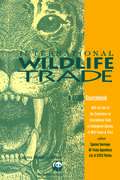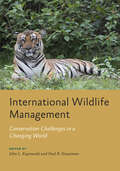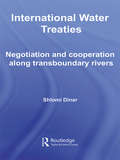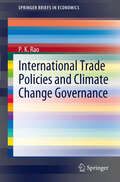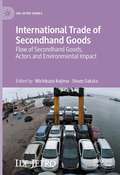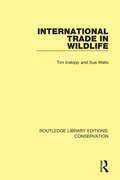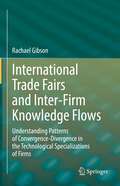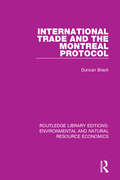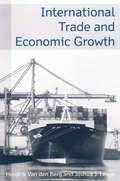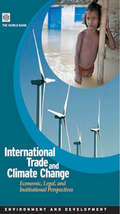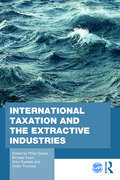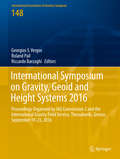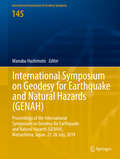- Table View
- List View
Internodes
by Ken Belford BelfordMoving with nomadic grace across the terrain of his previous book, Decompositions, the poetic language of Ken Belford in Internodes shares similar roots, traversing decades at the speed of a search query - pressing onward through Hazelton, the Bulkley Valley, and the unroaded head-waters of the Nass River in the Damdochax Valley - and meanwhile coming to terms with a poetry that "is lived" on the rugged streets of Prince George.In this twenty-first-century evolution, and one may say "mutation," of Marshall McLuhan's oft-repeated adage that "the medium is the message," Belford's text takes into account the nature of viral marketing and the impact of similar forms of social "trending" on our lives and our language, challenging linearity and order in favour of a work that may be read forward or backward or experienced with an abrupt sense of intimacy, in media res.Whether reflecting upon the internodal segment that is a vital part of a nerve cell; upon the relationship between the nodes and internodes of a plant stem; or upon the internode merely as an interstice of jargon amid connections we forge through high-speed telecommunication and wireless networks, the text invites the reader to make an informed decision before inviting others to "Like," to "Favourite," or to otherwise invest their social currency in Internodes.In addition to perceiving the poem as the "means of transmission" over time, Belford's poetic lines welcome readership as a form of collaborative action and agency in an age of crowdsourcing and flash mobs - and also as a form of ongoing social process that is sensitive to the life and demise of many of the decision trees that ultimately nourish our wavering notions of the future.
Internet of Things in the Food Industry: Challenges and Opportunities for the Internet of Food Things (Routledge Studies in Innovation, Organizations and Technology)
by Anna RogalaThe food industry is experiencing a digital transformation across the entire supply chain, from farm to fork. This book offers comprehensive insights into the challenges and opportunities faced, specifically examining the application of the Internet of Things. The authors analyse the benefits and the related threats from the perspective of the participants of the entire supply chain, including consumers. Taking the reader on a journey, this book begins with an analysis of technology use in farming, production, logistics and retailing before delving into the use of digitalization in educating consumers on sustainable consumption practices. The multifaceted analysis of the Internet of Food potential combines science and practice, enriching theoretical analysis with case studies. This book will be of interest to those researching and studying supply chain management, logistics, innovation and technology management and consumption, with a particular interest in the food industry.
Internet of Things in Smart Technologies for Sustainable Urban Development (EAI/Springer Innovations in Communication and Computing)
by R. Maheswar G. R. Kanagachidambaresan V. Manikandan K. RamakrishnanThis book provides solution for challenges facing engineers in urban environments looking towards smart development and IoT. The authors address the challenges faced in developing smart applications along with the solutions. Topics addressed include reliability, security and financial issues in relation to all the smart and sustainable development solutions discussed. The solutions they provide are affordable, resistive to threats, and provide high reliability. The book pertains to researchers, academics, professionals, and students.Provides solutions to urban sustainable development problems facing engineers in developing and developed countriesDiscusses results with industrial problems and current issues in smart city developmentIncludes solutions that are reliable, secure and financially sound
Internet of Things for Facility Management: Strategies of Service Optimization and Innovation (SpringerBriefs in Applied Sciences and Technology)
by Nazly AttaThis book proposes strategies for FM services optimization and innovation, based on innovative models of IoT application and big data management within FM processes, able to support FM stakeholders in: orienting and managing big data flows and their sources (sensor, RFID, etc.); changing FM services demand/offer and developing new approaches to FM agreements; drawing new supply chains based on network approaches; and outlining new profiles of competences for FM stakeholders. The book demonstrates that FM stakeholders (e.g. Real Estate owners, FM providers, service suppliers, etc.) increasingly need new support tools for understanding the features of the current offer of innovative ICT solutions in order to become promoters of FM innovation, and it provides them with an analytical-procedural framework useful for defining and implementing IoT-based FM services.
The Internet as Second Action Space
by Aharon KellermanOne of the most significant and important advancements in information and communication technology over the past 20 years is the introduction and expansion of the Internet. Now almost universally available, the Internet brings us email, global voice and video communications, research repositories, reference libraries, and almost unlimited opportunities for daily activities. Bridging geographical distances in unprecedented ways, the Internet has impacted all aspects of our daily lives – from facilitating the running of businesses, the attainment of services and keeping in touch with friends and family. Accessible at any time and for many of us from our mobile phones, the Internet has opened up a world of knowledge and communication platforms that we cannot now imagine living without. This book explores the concept that the Internet has become a second action space for individuals. Coexisting with traditional and "obvious" real space, the Internet serves as a novel spatial platform and action space to its subscribers all over the world. Kellerman expertly discusses this notion and examines the practical integration of cyberspace with real space. Part I examines the Internet as a platform for action and presents its relations with physical space concerning a range of uses and applications which were traditionally performed in physical space only. It discusses the idea that the Internet has become a second space and explores theoretical perspectives surrounding this notion. The Internet has undeniably made humankind more efficient and connected. Part II explores the Internet as an action space for human life, considering basic human needs, curiosity, identity and social relations. It further considers instances whereby use and application of the Internet cannot be fully performed in real space, mainly regarding people’s presentation of identity. Part III explores daily actions over the Internet, such as work, shopping, banking and social interactions. Kellerman also briefly touches on the darker aspects that the expansion of the Internet has made possible – including its role in fraud and other crimes. The concluding chapter discusses people living across the two spaces and identifies potential future developments. The Internet as Second Actions Space will appeal to students across the social sciences, in particular those studying Geography, Sociology, Media Studies, Internet Studies, Business and related disciplines.
The Internet as a Technology-Based Ecosystem
by Nigel WaltonThis book examines and critiques classical approaches to strategic analysis, whilst exploring alternative methods which utilise ecosystem and platform concepts, as well as chaos and complexity theories. The innovative study provides a critique of the neoclassical Newtonian school of strategy, and proves it to be largely inappropriate as a decision-making methodology in today’s internet-based market. By developing a new biological hydrothermal vent model in which analogical comparisons are made with the Information Communication Technology (ICT) sector, the chapters challenge existing paradigms of competitive advantage and analyse the extent to which the Internet can be considered to be an ecosystem in its own right. The Internet as a Technology-Based Eco-System offers a range of alternative models and analytical frameworks for the analysis of internet-based technology companies in the twenty-first century, creating a valuable tool for students and academics undertaking research in strategy, technology and electronic engineering.
Internationale Politik und Governance in der Arktis: Eine Einführung
by Kathrin Stephen Sebastian Knecht Golo M. BartschErstmalig in einem deutschsprachigen Lehrbuch werden Geschichte, Akteure, Institutionen und Prozesse der internationalen Arktispolitik vor dem Hintergrund verschiedener Politikfelder sowie Theorien der internationalen Beziehungen anschaulich und verständlich analysiert. Fragen wie „Was macht die Arktis als Region in den internationalen Beziehungen aus?“, „Welche Akteure und Institutionen spielen eine Rolle in der Arktispolitik?“, „Welche Bedeutung kommt den Ressourcen und Schifffahrtswegen in einer zugänglich werdenden Arktis zu?“ und „Welche umwelt- und sicherheitspolitischen Bedenken gehen mit einer wärmeren Arktis einher?“ stehen im Zentrum aktueller wissenschaftlicher wie politischer Debatten, welchen sich dieses Buch annimmt. Es bietet damit für Einsteiger ebenso wie für fortgeschrittene Arktiskundige eine Orientierung zwischen den Extremen der historischen Romantisierung der Nordpolarregion als Niemandsland und ihrer aktuellen Charakterisierung als drohendem Konfliktraum.Das Buch beleuchtet verschiedene Konzepte und Theorieansätze aus den internationalen Beziehungen, dem internationalen Recht und der politischen Geografie und unterzieht sie einem Eignungstest für die Erklärung arktispolitischer Vorgänge in den Bereichen Ressourcen-, Umwelt- und Sicherheitspolitik. Damit liefert es akademische wie praxisrelevante Orientierung für jeden, der politische Prozesse in der Arktis anhand konkreter theoretischer Annahmen zu verstehen sucht, und gibt Anregungen und Impulse für zukünftige Forschungsarbeit.
International Yearbook of Soil Law and Policy 2022 (International Yearbook of Soil Law and Policy #2022)
by Harald Ginzky Fabiano De Andrade Corrêa Elizabeth Dooley Irene L. Heuser Patricia Kameri-Mbote Robert Kibugi Oliver C. RuppelThis open access book presents an important discussion on the interface between sustainable soil management and climate mitigation and adaptation. It investigates a variety of aspects in this context, such as the political and societal consequences for countries in the Global South, an assessment of the outcomes of the UNFCCC Conference of Parties held in Glasgow, appropriate legal instruments to promote desealing, regulatory concepts for negative emissions in soil and land use, the debate in Europe on carbon uptake in soils and the climate-related policy of the Convention on Biological Diversity. Lastly, it provides information on recent court rulings on climate mitigation in Germany and Australia and their relevance for sustainable soil management.This sixth volume of the International Yearbook of Soil Law and Policy is divided into four parts, the first of which deals with various aspects of the theme “Climate Mitigation and Adaptation and Sustainable Soil Management.”The second part covers recent international developments, the third presents regional and national reports, and the fourth discusses overarching issues. Given the range of key topics covered, the book offers an indispensable tool for all academics, legislators and policymakers working in this field. The “International Yearbook of Soil Law and Policy” series discusses central questions in law and politics with regard to the protection and sustainable management of soil and land – at the international, national, and regional level.
International Yearbook of Soil Law and Policy 2019 (International Yearbook of Soil Law and Policy #2019)
by Harald Ginzky Elizabeth Dooley Irene L. Heuser Emmanuel Kasimbazi Robert Kibugi Till Markus Tianbao Qin Oliver RuppelThis book presents an important discussion on the implementation of sustainable soil management in Africa from a range of governance perspectives. It addresses aspects such as the general challenges in Africa with regard to soil management; the structural deficiencies in legal, organizational and institutional terms; and specific policies at the national level, including land cover policies and persistent organic pollutants.This fourth volume of the International Yearbook of Soil Law and Policy is divided into four parts, the first of which deals with several aspects of the theme “sustainable soil management in Africa.” In turn, the second part covers recent international developments, the third part presents regional and national reports (i.a. Mexico, USA and Germany), and the fourth discusses cross-cutting issues(i.a. on rural-urban interfaces). Given the range of key topics covered, the book offers an indispensible tool for all academics, legislators and policymakers working in this field.The “International Yearbook of Soil Law and Policy” is a book series that discusses central questions in law and politics with regard to the protection and sustainable management of soil and land – at the international, national and regional level.
International Yearbook of Soil Law and Policy 2018 (International Yearbook of Soil Law and Policy #2018)
by Harald Ginzky Elizabeth Dooley Irene L. Heuser Emmanuel Kasimbazi Till Markus Tianbao QinThis book presents an important discussion on urbanization and sustainable soil management from a range of perspectives, addressing key topics such as sustainable cities, soil sealing, rehabilitation of contaminated soils, property rights and liability issues, as well as trading systems with regard to land take.This third volume of the International Yearbook of Soil Law and Policy is divided into four parts, the first of which explores several aspects of the topic “urbanization and sustainable management of soils.” The second part then covers recent international developments, while the third part presents regional and national reports, and the fourth discusses cross-cutting issues. Given the range of key topics covered, the book offers an indispensible tool for all academics, legislators and policymakers working in this field. The “International Yearbook of Soil Law and Policy” series discusses central questions in law and politics with regard to the protection and sustainable management of soil and land – at the international, national and regional level.
International Yearbook of Soil Law and Policy 2017 (International Yearbook of Soil Law and Policy #2017)
by Harald Ginzky Irene L. Heuser Tianbao Qin Elizabeth Dooley Emmanuel Kasimbazi Till MarkusThis book presents an important discussion on soil and sustainable agriculture from a range of perspectives, addressing key topics such as sustainable intensification, the FAO Voluntary Guidelines, and the crucial role of appropriate tenure rights. This second volume of the International Yearbook of Soil Law and Policy is divided into four parts, the first of which deals with several aspects of the theme "soil and sustainable agriculture. " In turn, the second part covers recent international developments, the third part presents regional and national reports, and the fourth discusses cross-cutting issues. Given the range of key topics covered, the book offers an indispensible tool for all academics, legislators and policymakers working in this field. The "International Yearbook of Soil Law and Policy" is a book series that discusses central questions in law and politics with regard to the protection and sustainable management of soil and land - at the international, national and regional level. The Chapter "The Use of Property Law Tools for Soil Protection" by Jessica Owley is available open access under a CC BY 4. 0 license at link. springer. com.
International Yearbook of Soil Law and Policy 2016
by Harald Ginzky Irene L. Heuser Tianbao Qin Oliver C. Ruppel Patrick WegerdtThe first volume of the International Yearbook of Soil Law and Policy includes an important discussion on the implementation of the Sustainable Development Goals that are the basis for the post-2015 development agenda up to the year 2030; the Yearbook focuses in particular on Goal 15, which includes achieving a "land degradation-neutral world. " It also provides a comprehensive and highly informative overview of the latest developments at the international level, important cross-disciplinary issues and different approaches in national legislation. The book is divided into four sections. Forewords by internationally renowned academics and politicians are followed by an analysis of the content and structure of the Sustainable Development Goals with regard to soil and land as well as the scientific methods for their implementation. In addition, all relevant international regimes are discussed, including the latest developments, such as the decisions made at the 12th Conference of the Parties to the United Nations Convention to Combat Desertification (UNCCD) and the Paris Agreement on Climate Change. The next section deals with cross-disciplinary issues relevant to the implementation of the Sustainable Development Goals like the right to food, land tenure, migration and the "Economics of Land Degradation" initiative. The last section gathers reports on the development of national legislation from various nations and supra-national entities, including Brazil, China, the European Union, Mongolia, Namibia and the United States. Addressing this broad range of key topics, the book offers an indispensible tool for all academics, legislators and policymakers working in this field. The "International Yearbook of Soil Law and Policy" is a book series that discusses the central questions of law and politics with regard to the protection and sustainable management of soil and land - at the international, national and regional level.
International Wildlife Trade: A Cites Sourcebook
by Ginette Hemley Kathryn FullerFor more than two decades, the Convention on International Trade in Endangered Species of Wild Fauna and Flora, known as CITES, has been one of the largest and most effective conservation agreements in the world. By regulating international commerce in certain species -- from African elephants and exotic birds to hardwoods and bulbs -- the treaty limits trade in species that are in genuine need of protection while allowing controlled trade in species that can withstand some level of exploitation.In addition to explaining how CITES operates, this definitive reference includes: the full text of the CITES treatyCITES Appendices I, II, and III a list of Parties as of March 1994 a list of reservations by Parties as of October 1993 Chapters address the status of highly threatened species such as elephants, rhinos, and tigers as well as other heavily exploited species including parrots, primates, and bears.International Wildlife Trade provides a valuable overview of wildlife trade issues, and of the strengths and weaknesses of the current treaty.
International Wildlife Management: Conservation Challenges in a Changing World (Wildlife Management and Conservation)
by John L. Koprowski and Paul R. KrausmanA call for wildlife conservationists to transcend the boundaries of locality, share best practices, and unite with a common voice to influence global policy.Habitat loss, disease management, predator-human conflict, illegal trade—these are among the many conservation challenges faced by wildlife experts around the world. But how wildlife professionals approach these issues has historically been geographically fragmented. By providing a broad perspective on issues faced by wildlife on an international scale, the authors of International Wildlife Management make vital connections, drawing attention to underlying causes and strategies for mitigation that may look surprisingly similar from Montana to Zimbabwe. Bringing together wildlife professionals from around the globe to discuss shared challenges, International Wildlife Management• examines widespread patterns of wildlife loss• covers key conservation strategies, including species reintroduction, community engagement, and wildlife commerce• explores the urgent concerns of climate change, habitat loss and fragmentation, invasive species, and poaching• reviews major organizations involved in wildlife management at an international level, highlighting examples of cooperation among groups and nations in effective wildlife management efforts• features stories of success and struggle from authors across 17 countries on 6 continents This timely and thorough overview thinks big by assessing threats to wildlife on a global scale. Wild creatures don't recognize artificial geographic borders. This useful compendium demonstrates that researchers and scientists should follow their lead.
International Water Treaties: Negotiation and Cooperation Along Transboundary Rivers (Routledge Studies in the Modern World Economy)
by Shlomi DinarAs demand for fresh water rises, together with population, water scarcity already features on the national security agenda of many countries. In this book, Dinardevelops a theory to explain solutions to property rights conflicts over shared rivers. Through systematic analysis of available treaty texts, corresponding side-payment and cost-sharing patterns are gleaned. Geographic and economic variables are used to explain recurring property rights outcomes. Rather than focusing on a specific river or particular geographic region, the book analyzes numerous rivers, dictated by the large number of treaty observations, and is able to test several hypotheses, devising general conclusions about the manner in which states resolve their water disputes. Policy implications are thereby also gained. While the book simultaneously considers conflict and cooperation along international rivers, it is the focus on negotiated agreements, and their embodied side-payment and cost-sharing regimes, that justifies the use of particular independent variables.
International Trade Policies and Climate Change Governance
by P. K. RaoThis work offers a synthesis of the current approaches toward an integration of international trade and climate change, with a view to fostering potential improvements in policies and institutions affecting these. A number of pragmatic measures are proposed with reference to the WTO and the United Nations Framework Convention on Climate Change (UNFCCC) regimes, which are expected to contribute toward enhanced climate change governance, as well as promoting international trade.
International Trade of Secondhand Goods: Flow of Secondhand Goods, Actors and Environmental Impact (IDE-JETRO Series)
by Michikazu Kojima Shozo SakataThis book demonstrates the flow of the international trade of secondhand goods and examines the socio-economic background and mechanisms of the trade. It highlights the actors involved in the trade of secondhand goods and how traditionally secondhand good have largely been traded through social or ethnic networks in order to effectively transfer quality and market information. The development of information technology and emergence of new information platforms have changed these business models. The policies and regulations relating to the trade of secondhand goods are explored, alongside the negative impact of these trades, and the growing awareness of the circular economy. This book illustrates how importing countries as well as international institutions have developed regulations in order to balance these two issues. It will relevant to students and economists interested in development economics and economics geography.
International Trade in Wildlife (Routledge Library Editions: Conservation #2)
by Tim Inskipp Sue WellsOriginally published in 1979 International Trade in Wildlife is a product of the 1973 Convention on International Trade in Endangered Species of Wild Fauna and Flora conference, containing the full text of the CITIES convention. The volume outlines the animals and plants controlled by CITIES, and describes the protective policies put in place to protect endangered plants and animals. It gives a detailed background to the international traffic in monkey’s, spotted cats, whales, ivory, parrots, tortoises, marine turtles, crocodiles, butterflies, sponges and rare orchids at the time of publication and acts as a comprehensive document on the conservation policies enacted through CITIES, as well as facts surrounding the decline of endangered species. Although published over 40 years ago, the document still offers a comprehensive and useful guide to conservation and will be an important historical document for environmental policy makers and conservationists alike.
International Trade Fairs and Inter-Firm Knowledge Flows: Understanding Patterns of Convergence-Divergence in the Technological Specializations of Firms
by Rachael GibsonAgainst a backdrop of economic uncertainty caused by a shift toward protectionism and the COVID-19 pandemic among other issues, this book suggests that international trade fairs (ITFs) represent a vital source of economic dynamism that can support national and regional economies by creating opportunities for firms to access new markets, network with key actors in their industry or value chain, and tap into valuable external knowledge flows regarding new technologies and innovations. Author Rachael Gibson argues that ITFs have become crucial nodes in the global political economy, driving global economic dynamics and mediating differences between capitalist economies regarding their technological and institutional practices and conditions. In this way, ITFs represent a decisive mechanism by which distinct national patterns of technological specialization may converge or diverge.Trade fairs represent important platforms for networking, interactive learning, and knowledge exchange because they foster intense interactions among actors despite spatial boundaries. ITFs also tend to be organized according to a specific technological or industry focus, which means that they can facilitate interactions between firms from different capitalist varieties. Through the diffusion of state-of-the-art knowledge, ITFs may, thus, serve as drivers of economic globalization, challenging the continuation of distinct capitalist varieties by enabling cross-system convergence regarding the technological specializations of firms. Yet, it is clear that countries have retained competitive advantages in specific industries and that full convergence has not taken place. This book explores this puzzle.
International Trade and the Montreal Protocol (Routledge Library Editions: Environmental and Natural Resource Economics)
by Duncan BrackOriginally published in 1996. The Montreal Protocol on Substances that Deplete the Ozone Layer is one of the most effective multilateral environmental agreements currently in existence. Established to control the production and consumption of CFCs and other ozone-depleting chemicals, the Protocol is an important example of an agreement which places restrictions on international trade in the interests of the global environmental – a feature which may become common in future treaties. This report examines the development, effectiveness and future of the trade provisions of the ozone regime, concluding that they have contributed significantly to its success in attracting signatories and in limiting ozone depletion. Issues considered include the compatibility of the trade provisions and the GATT, trade restrictions and developing countries, and the new problems of non-compliance and illegal trade in CFCs.
International Trade and Economic Growth
by Van den Hendrik Joshua J LewerUnlike any other text on international trade, this groundbreaking book focuses on the dynamic long-run relationship between trade and economic growth rather than the static short-run relationship between trade and economic efficiency. The authors begin with well-known theory on international trade, and then take the student into more recent and less well-known work, all with a careful balance between empirical and theoretical perspectives. A valuable teaching tool for courses in international economics, economic growth, and economic development at both the undergraduate and graduate levels, the book uses some very modest algebra, calculus, and statistics. However, most analytical discussions are built around diagrams in order to make the text accessible to students with a variety of social science backgrounds. An Instructor's Manual is available to professors who adopt the text.
International Trade and Climate Change: Economic, Legal, and Institutional Perspectives
by World BankClimate change remains a global challenge requiring international collaborative action. Another area where countries have successfully committed to a long-term multilateral resolution is the liberalization of international trade. Integration into the world economy has proven a powerful means for countries to promote economic growth, development, and poverty reduction. The broad objectives of the betterment of current and future human welfare are shared by both global trade and climate regimes. Yet both climate and trade agendas have evolved largely independently through the years, despite their mutually supporting objectives. Since global emission goals and global trade objectives are shared policy objectives of most countries, and nearly all of the World Bank's clients, it makes sense to consider the two sets of objectives together. This book is one of the first comprehensive attempts to look at the synergies between climate change and trade objectives from economic, legal, and institutional perspectives. It addresses an important policy question - how changes in trade policies and international cooperation on trade policies can help address global environmental spillovers, especially GHG emissions, and what the (potential) effects of (national) environmental policies that are aimed at global environmental problems might be for trade and investment. It explores opportunities for aligning development and energy policies in such a way that they could stimulate production, trade, and investment in cleaner technology options.
International Taxation and the Extractive Industries: Resources without Borders (Routledge Studies in Development Economics)
by Philip Daniel Michael Keen Artur Świstak Victor ThuronyiThe taxation of extractive industries exploiting oil, gas, or minerals is usually treated as a sovereign, national policy and administration issue. This book offers a uniquely comprehensive overview of the theory and practice involved in designing policies on the international aspects of fiscal regimes for these industries, with a particular focus on developing and emerging economies. <P><P>International Taxation and the Extractive Industries addresses key topics that are not frequently covered in the literature, such as the geo-political implications of cross-border pipelines and the legal implications of mining contracts and regional financial obligations. The contributors, all of whom are leading researchers with experience of working with governments and companies on these issues, present an authoritative collection of chapters. The volume reviews international tax rules, covering both developments in the G20-OECD project on ’Base Erosion and Profit Shifting’ and more radical proposals, identifying core challenges in the extractives sector. <P><P>This book should become a core resource for both scholars and practitioners. It will also appeal to those interested in international tax issues more widely and those who study environmental economics, macroeconomics and development economics.
International Symposium on Gravity, Geoid and Height Systems 2016: Proceedings Organized by IAG Commission 2 and the International Gravity Field Service, Thessaloniki, Greece, September 19-23, 2016 (International Association of Geodesy Symposia #148)
by Georgios S. Vergos Roland Pail Riccardo BarzaghiThese proceedings contain 27 papers, which are the peer-reviewed versions of presentations made at the International Association of Geodesy (IAG) symposium “Gravity, Geoid and Height Systems 2016” (GGHS2016). GGHS2016 was the first Joint international symposium organized by IAG Commission 2 “Gravity Field”, the International Gravity Field Service (IGFS) and the GGOS Focus Area “Unified Height System”. It took place in Thessaloniki, Greece, in September 19-23, 2016 at the premises of the Aristotle University of Thessaloniki. The symposium was organized by the Department of Geodesy and Surveying of the Aristotle University of Thessaloniki, which presently hosts the IGFS Central Bureau. The focus of the Symposium was on methods for observing, estimating and interpreting the Earth gravity field as well as its applications. GGHS2016 continued the long and successful history of IAG’s Commission 2 Symposia.
International Symposium on Geodesy for Earthquake and Natural Hazards (GENAH)
by Manabu HashimotoThese proceedings contain a selection of peer-reviewed papers presented at the International Symposium on Geodesy for Earthquake and Natural Hazards (GENAH), Matsushima, Japan, 22-26 July, 2014. The scientific sessions focused on monitoring temporal and spatial changes in Earth's lithosphere and atmosphere using geodetic satellite systems, high rate GNSS as well as high resolution imaging (InSAR, Lidar). Researchers in various fields of geodesy discussed the role of geodesy in disaster mitigation and how groups with different techniques can collaborate toward such a goal.
